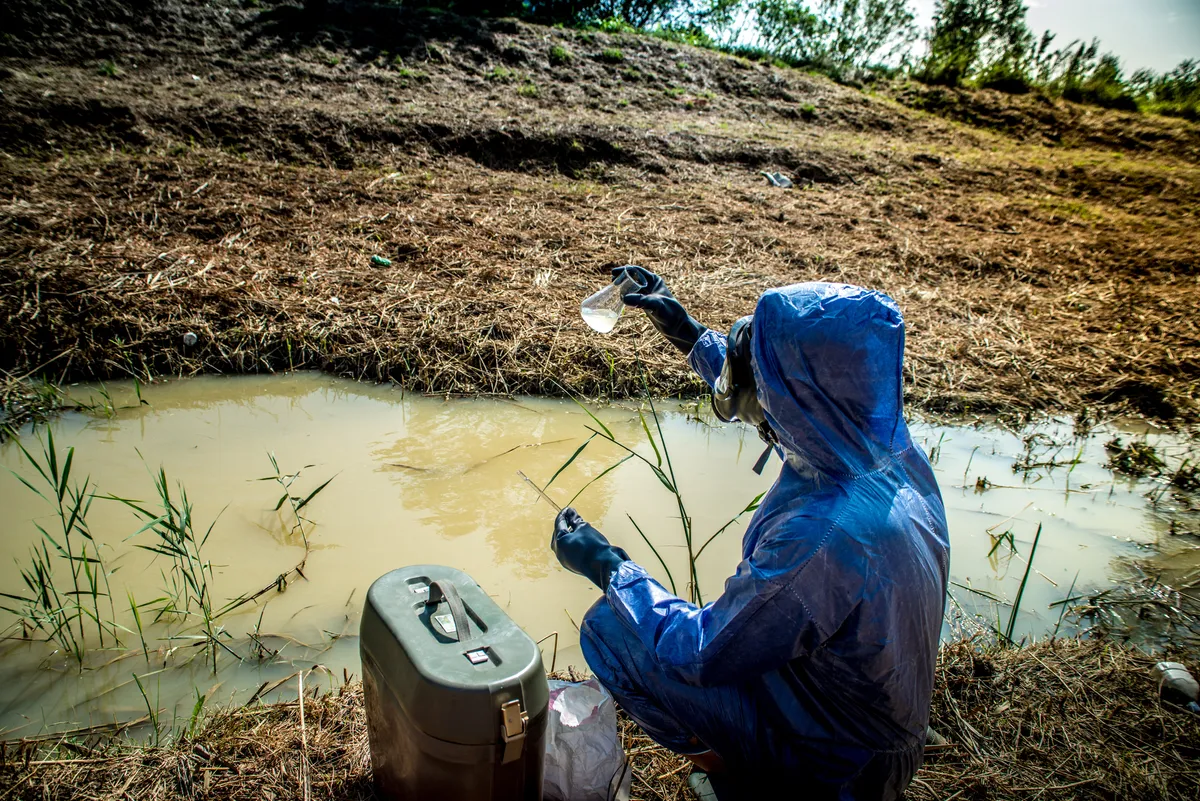Earlier this month, an Oxford University professor claimed that the coronavirus may not have originated in China. Instead, Dr Tom Jefferson suggested that SARS-CoV-2 could have been lying dormant across the world until emerging under favourable environmental conditions.
In a recent interview Dr Jefferson pointed to studies that found traces of COVID-19 in sewage samples from Spain, Italy and Brazil all of which pre-date its discovery in China. This included one preprint study, which has not been peer reviewed, that claims to have found the presence of SARS-CoV-2 genomes in a Barcelona sewage sample from 12 March 2019.
Can viruses lie dormant?
“There are some viruses (such as herpes viruses) that can infect cells, establish a latent infection and then be reactivated at a later date,” explains Dr Jeremy Rossman, a virologist from the University of Kent. “However, it is unlikely that coronaviruses establish any latency or dormancy.
“There is no evidence that SARS-CoV-2 can lie dormant or be activated by environmental conditions.”

Dr Rossman adds that “we know the SARS-CoV-2 virus rapidly degrades in the environment (such as on contaminated surfaces) and so it is very unlikely that the virus would be able to persist in the environment.”
What about the virus genomes found in Barcelona?
The only suggested evidence for very early presence of the virus comes from a pre-print study that has not yet been peer reviewed.
“Without full peer review of the study it is premature to make any conclusions, as other factors may have influenced the results,” warns Dr Rossman.
Read more about the coronavirus:
- Coronavirus: Scientists identify genes that help bats fight off viruses
- Oxford vaccine shows 'strong antibody and T-cell immune response'
- COVID-19 'more severe' in cold weather, study suggests
“Of note, in the single early sample deemed positive, the virus genome was only detected in 2 out of 5 [tests] and at very low detection levels.
“This raises the possibility that it was not SARS-CoV-2 that was detected, but could be cross-reactivity with another virus or contaminant. For example, perhaps a local outbreak of another, related coronavirus occurred during that time period and some of the [tests] could not fully distinguish between that coronavirus and SARS-CoV-2.”
What evidence is there that the virus originated in China?
Dr Rossman says that currently, the best evidence for the location and date of SARS-CoV-2 emergence into the human population comes from the early detection of positive cases in China and from the determination of cases presumed to be caused by SARS-Cov-2 through the symptoms exhibited (the study of which is called symptomology). It’s also possible to use molecular dating when forming a timeline for viral emergence, using human samples and analysing the different mutations of the virus’s genome.

“This combination of data puts viral emergence in China between October and December of 2019.
“Our current data does not specifically pinpoint the geographical area where the virus emerged, so we cannot specifically confirm emergence in Wuhan; however, the number of early case reports and diagnostic testing is highly convincing for emergence in China in late 2019.”
“Finding evidence of the virus in humans (or human samples such as sewage) in March 2019 would be highly surprising,” says Dr Rossman.
Reader Q&A: How long can a virus live outside a body?
Asked by: Chaudhary Nikul, India
Viruses can live for a surprisingly long time outside of a body, depending on conditions such as moisture and temperature. They tend to live longer on water-resistant surfaces, such as stainless steel and plastics.
A cold virus can sometimes survive on indoor surfaces for several days, although its ability to cause infection drops dramatically over time.
Flu viruses can survive in the air for several hours, especially at lower temperatures, and on hard surfaces they can survive and remain infectious for 24 hours.
Enteric viruses, such as norovirus and hepatitis A, can survive for weeks on a surface if conditions are suitable. The norovirus is known for causing sickness outbreaks in schools, cruise ships and hospitals.
Read more:
